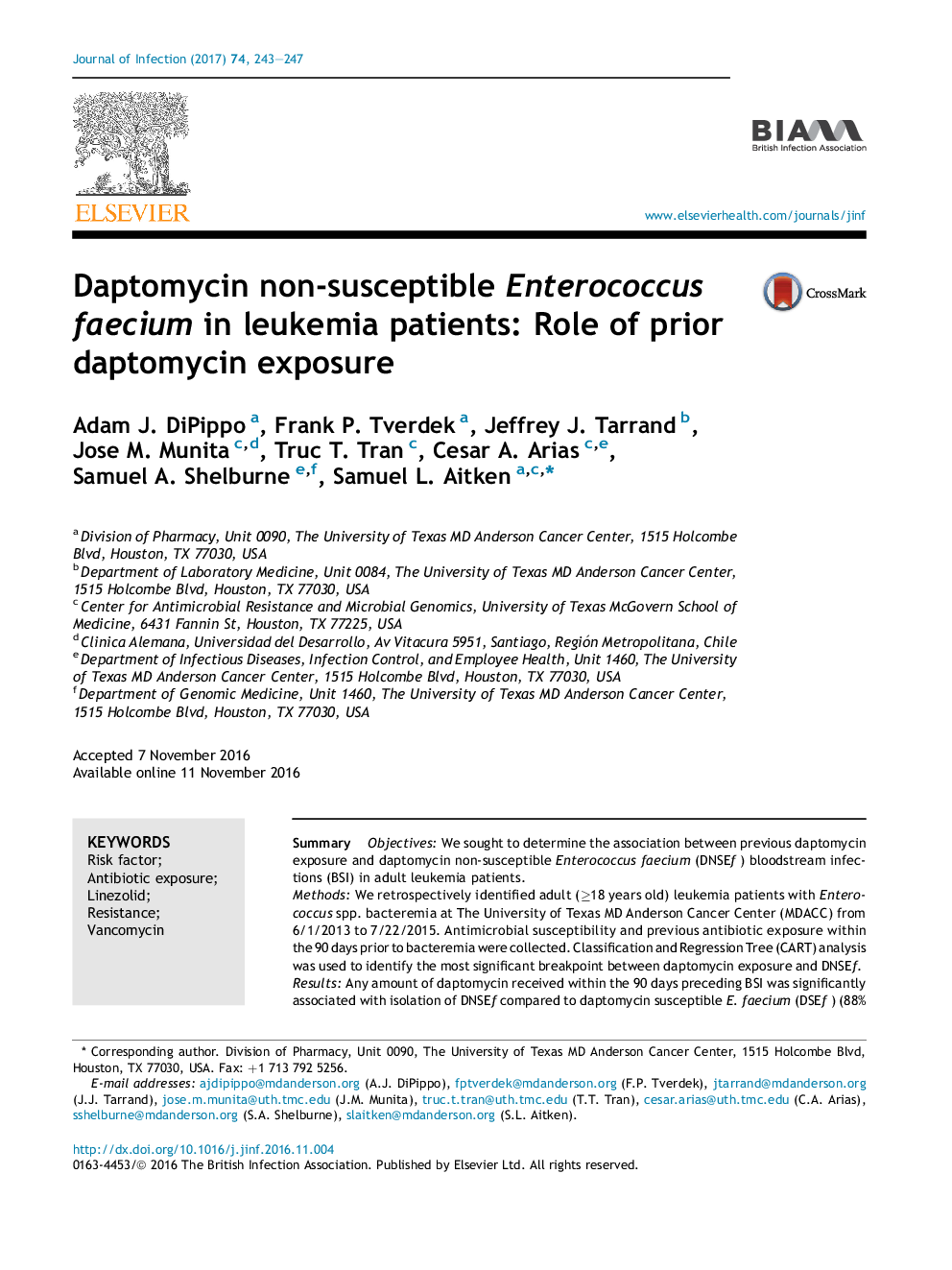| Article ID | Journal | Published Year | Pages | File Type |
|---|---|---|---|---|
| 5668625 | Journal of Infection | 2017 | 5 Pages |
â¢Daptomycin non-susceptible Enterococcus faecium (DNSEf) bloodstream infection was found in 21% of cases.â¢Receipt of â¥13 days of daptomycin was significantly correlated with DNSE.â¢Stewardship interventions to minimize daptomycin exposure may limit the emergence of DNSE.
SummaryObjectivesWe sought to determine the association between previous daptomycin exposure and daptomycin non-susceptible Enterococcus faecium (DNSEf) bloodstream infections (BSI) in adult leukemia patients.MethodsWe retrospectively identified adult (â¥18 years old) leukemia patients with Enterococcus spp. bacteremia at The University of Texas MD Anderson Cancer Center (MDACC) from 6/1/2013 to 7/22/2015. Antimicrobial susceptibility and previous antibiotic exposure within the 90 days prior to bacteremia were collected. Classification and Regression Tree (CART) analysis was used to identify the most significant breakpoint between daptomycin exposure and DNSEf.ResultsAny amount of daptomycin received within the 90 days preceding BSI was significantly associated with isolation of DNSEf compared to daptomycin susceptible E. faecium (DSEf) (88% vs. 44%, respectively, p < 0.01). CART analysis identified receiving â¥13 days of daptomycin in the preceding 90 days as most significantly correlated with DNSEf (60% vs. 11%, relative risk [RR] 5.31, 95% Confidence interval [CI] 2.36-11.96, p < 0.01).ConclusionsPrior daptomycin exposure for â¥13 days within 90 days preceding BSI was significantly associated with isolation of DNSEf BSI in adult leukemia patients at our institution. Antimicrobial stewardship initiatives aimed at minimizing daptomycin exposure in high-risk patients may be of significant benefit in limiting the emergence of DNSEf.
